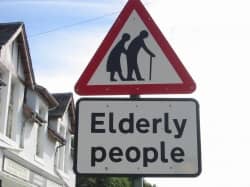The proportion of the population aged over 65 is set to increase to 24% by 2051
Updated 11th July 2022 | 3 min read Published 23rd June 2015

In just over 40 years, the amount of people that are of State Pension Age (SPA) will increase as a proportion of the population and this is down to increasing life expectancy and a decrease in birth rates.
Statistics also show that in 1981, men that were aged 65 could expect on average to live a further 14 years and women aged 65 could expect on average to live an extra 18 years. If you compare this to 2051 (only 70 years later), men aged 65 are expected to live an extra 25.9 years and women are expected to live an extra 28.3 years.
To make this a little easier to understand, a 65 year old man living in 1981 was expected on average to live until he was 79.
Another man, who has his 65th birthday in 2051 will be expected to live on average, until he is almost 91.
On top of this, the men all turning 65 in 2051 will be joined by the other 24% of the population also aged 65 and over. So the statistics show that not only are we living longer, but the amount of people that are living longer is outgrowing the amount of people that are young enough to work.
You can probably guess where this is going.
UK state pension payments are funded through taxation and national insurance contributions from those that are; obviously; of working age. If the level of people of working age is diminishing in comparison to the number of people that are claiming state pension then we appear to be in for a tight squeeze.
The "old age support ratio", a number given to this proportion, is forecast to fall to 2.9 by 2051 from 3.3 in the period from mid 1960s to 2006.
What this means is that the government will inevitably be forced to make tough decisions. David Sinclair from the International Longevity Centre UK (ILCUK) explains to the Financial Times:
“Tax revenue from those in work may fail to keep up with demand for social security and healthcare from an increasingly large proportion of people aged over 65 and out of work and who have poor health,” adds Mr Sinclair.
“This will force governments to make tough choices.”
One of the first moves that the government made to try and address the deficit that may be left in people's pension savings was to introduce auto enrolment. This requires everyone that meets a certain criteria based on age and earnings to be automatically enrolled into a qualifying workplace pension scheme and have contributions paid into it from both the employer and the employee. This level of contribution will increase to a combined 8% by 2017.
There were fears however that the new "Pensions freedoms" that were introduced in the latest budget by the Government would undermine this legislation by allowing those aged 55 and over to access their pensions in a lump sum and do what they like with the money; not necessarily using it as a long term plan for retirement.
At IRIS we fully support auto enrolment and the IRIS AE Suite™ streamlines the process to enable you to comply with the legislation efficiently and effectively. The software automatically assesses your employees' eligibility with each run of the payroll and then distributes payslips and P60s electronically. The IRIS AE Suite™ also publishes pension letters to the cloud for your employees to access easily and keeps them on record for auditing purposes.
Find out more about the IRIS AE Suite™ and even book a free demonstration to find out how you can streamline your auto enrolment process and stay compliant with the legislation, ensuring you are doing your bit to secure a positive retirement for your employees.





